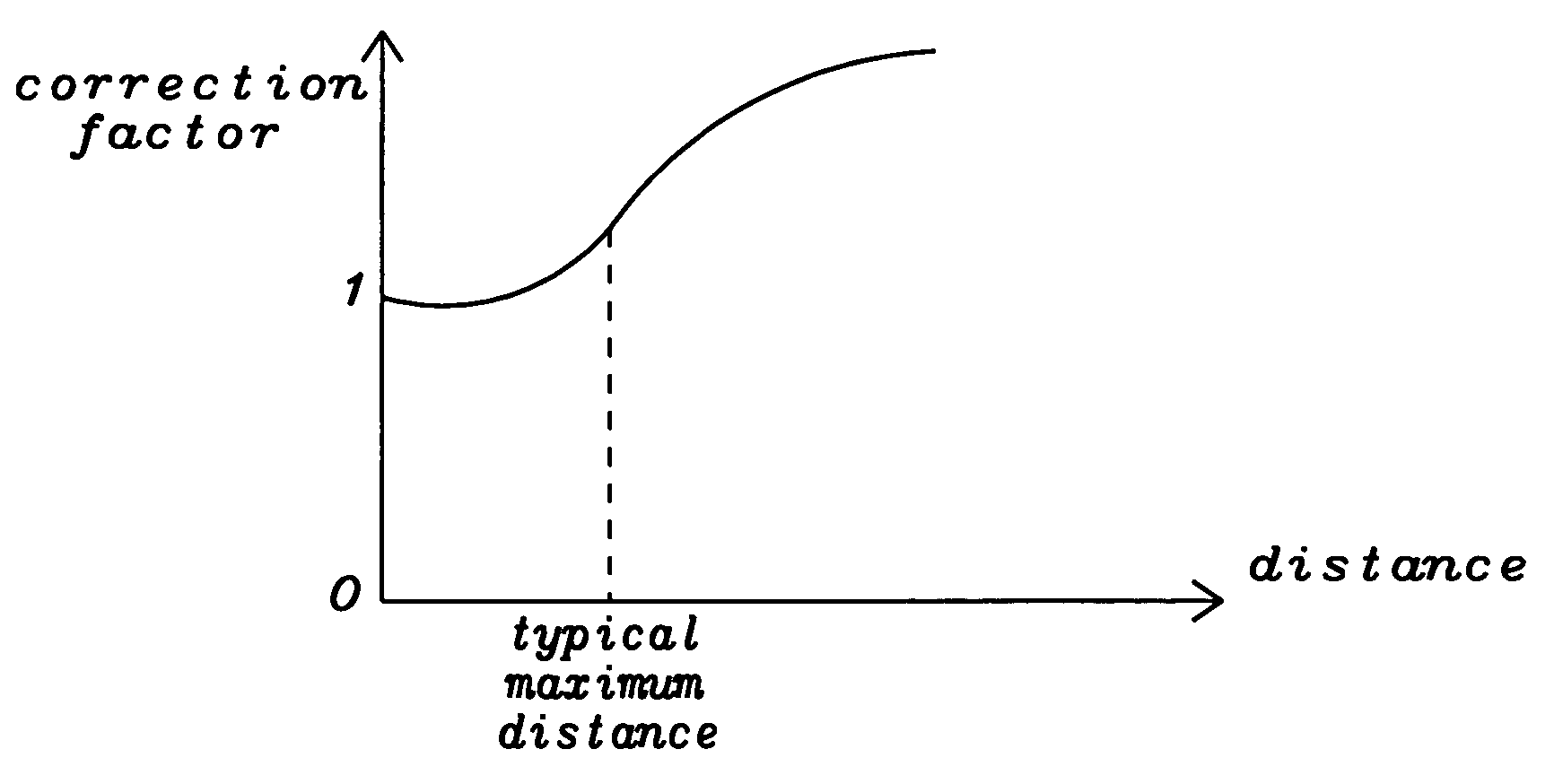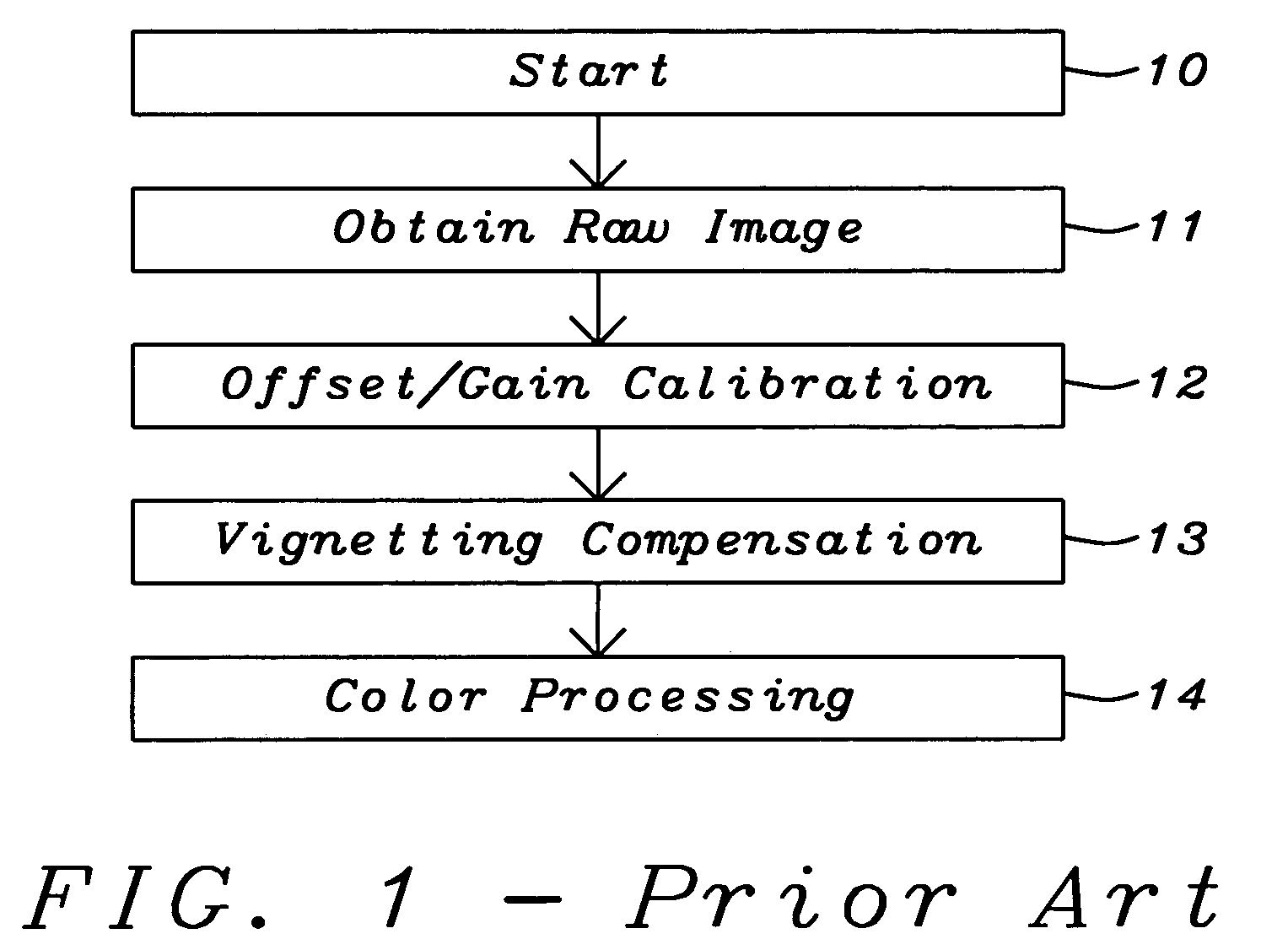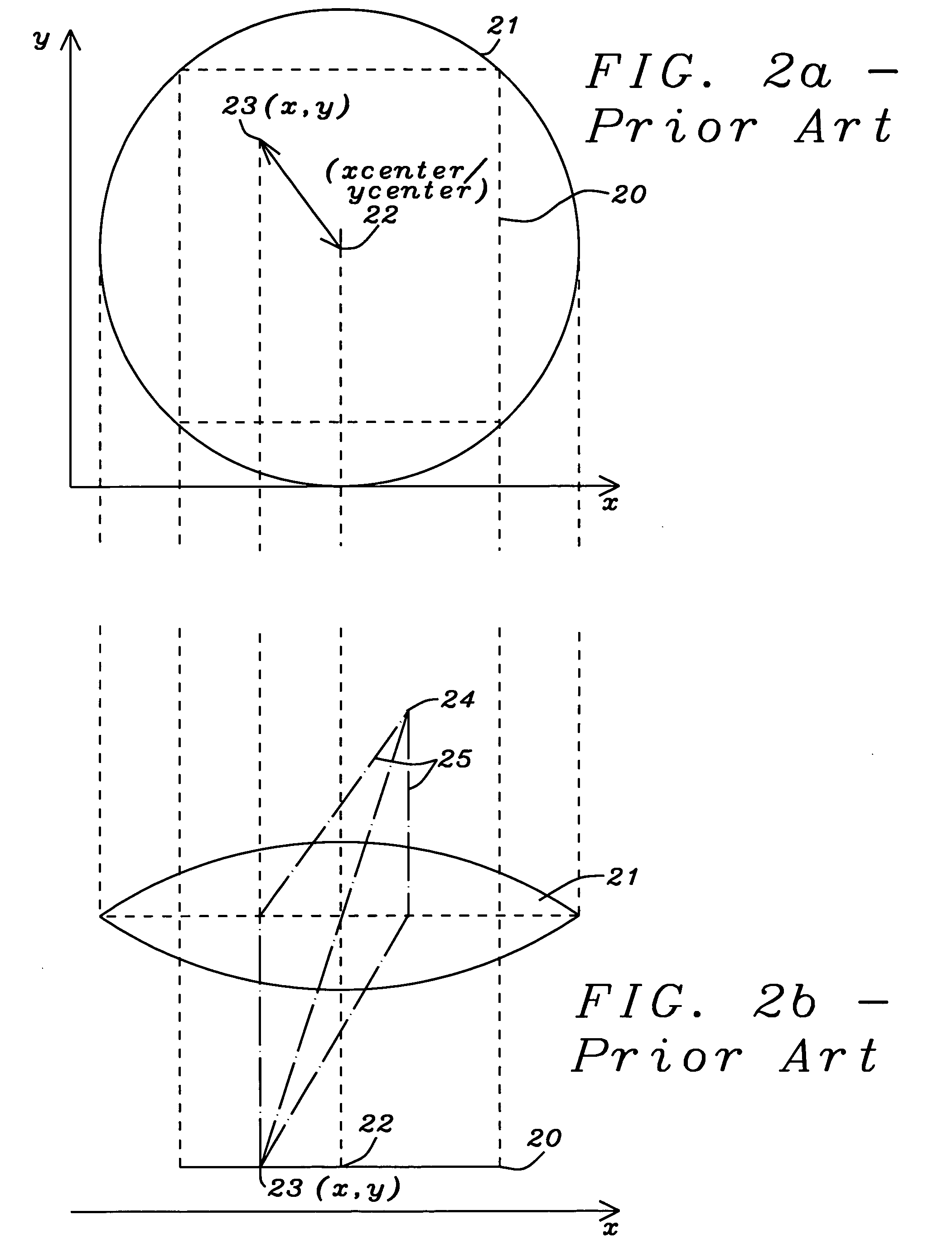Lens shading algorithm
a shading algorithm and lens technology, applied in the field of image processing, can solve the problems of unworkable, inacceptable, and inability to use typical complex optical systems, and achieve the effect of fast and efficient calculation
- Summary
- Abstract
- Description
- Claims
- Application Information
AI Technical Summary
Benefits of technology
Problems solved by technology
Method used
Image
Examples
Embodiment Construction
[0027] The preferred embodiments disclose a novel algorithm and a method to compute a correction factor to compensate lens shading or vignetting of digital cameras allowing the usage of a cheaper lens and still producing a high image quality in respect of vignetting. Said algorithm of the present invention can be can computed in a very fast and efficient way and consumes less power and time for tits computation. A correction factor is calculated for each pixel of the sensor used.
[0028] At first for each pixel the square dist2 of its distance from the center of the image array (as shown in FIGS. 2a and 2b prior art) has to be calculated:
dist2(x,y)=(x−xcenter)2+(y−ycenter)2, (3)
wherein X and y are the coordinates of a pixel and Xcenter and Ycenter are the coordinates of the center of an image array corresponding to the center of the lens used. The next step ids the calculation of the square dist4 of this squared distance dist2 has to be calculated:
dist4(x,y)=(dist2)2. (4)
[0029...
PUM
 Login to View More
Login to View More Abstract
Description
Claims
Application Information
 Login to View More
Login to View More - R&D
- Intellectual Property
- Life Sciences
- Materials
- Tech Scout
- Unparalleled Data Quality
- Higher Quality Content
- 60% Fewer Hallucinations
Browse by: Latest US Patents, China's latest patents, Technical Efficacy Thesaurus, Application Domain, Technology Topic, Popular Technical Reports.
© 2025 PatSnap. All rights reserved.Legal|Privacy policy|Modern Slavery Act Transparency Statement|Sitemap|About US| Contact US: help@patsnap.com



